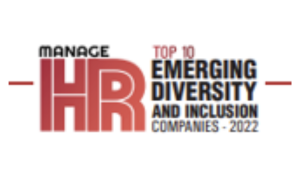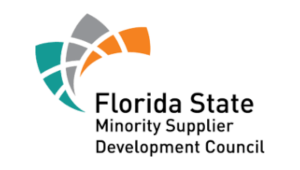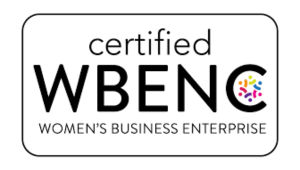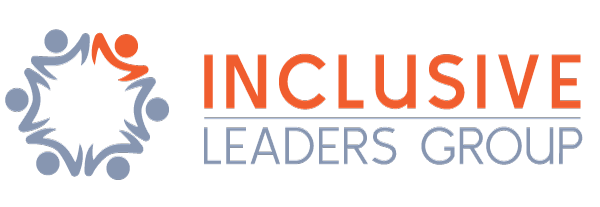The best definition of “ally” (that we’ve found) comes from author Roxane Gay in her
article for Marie Claire, “On Making Black Lives Matter.” In it, she notes:
“Black people do not need allies. We need people to stand up and take on the problems borne of oppression as their own, without remove or distance.”
“We need people to do this even if they cannot fully understand what it’s like to be oppressed for their race or ethnicity, gender, sexuality, ability, class, religion, or other marker of identity.”
“We need people to use common sense to figure out how to participate in social justice.”
To recap: Being an ally doesn’t necessarily mean you fully understand what it feels like to be oppressed. It means you’re taking on the struggle as your own.
How to Be an Ally in the Workplace
Inclusive Leaders Group (ILG) facilitates virtual workshops and keynote presentations for companies and organizations to Kickstart Workplace Allyship. We explain the fundamentals of how to be an ally in the workplace. Complete with research, statistics, and real-world successful examples, ILG facilitators challenge participants to question our understandings of what allyship means and why we need it, especially at this time.
We enlighten participants that the role of an ally is to be actively working to end oppression. Even those of us who consider ourselves “with it” on matters of diversity and inclusion have been known to dismiss allyship as a social justice buzzword or an unnecessary label. It’s easy to think, “Of course I’m an ally! I’m a good person, I’m progressive, I don’t perpetuate stereotypes… What else is there to it?” There’s a great deal more.
WHY SHOULD YOU BE AN ALLY TO EMPLOYEES FROM DISCRIMINATED GROUPS?
As we said earlier, it is in our own self-interest to be an ally to fellow workers from diverse and oppressed groups. Ultimately, our own struggles are tied to everyone else’s. Here is why:
- We live in an increasingly diverse workplace. To organize, unify, and empower teams, employees need to learn how to act on each other’s behalf.
- When you give support to others, you are developing allies for your own department and your own projects–in fact, there is probably no better way to make an ally on the job than to be one to someone else.
- To address and change the systemic problems that cause discrimination, you will need a lot of employees who work together cooperatively and who are not vulnerable to divide-and-conquer tactics. Strong alliances between many teams and groups can provide the necessary people power to make systemic changes.
- When you are standing up against discrimination, you are creating a moral standard in your company. You are putting everyone on notice that targeting any group will not be allowed.
- Despite being employed at the same company, groups are often isolated from each other: “Us” from “them” and “them ” from “us.” Often groups that are targeted feel that no one cares about “their” issues and they can’t get help. Often straight, Christian, white male employees feel that their lives are not impacted by racism, sexism, classism, homophobia, anti-Semitism, etc.; they feel powerless, numb, and distant. Being an ally is an antidote to isolation for those targeted by discrimination and those in the targeting role–it empowers everyone involved.
HOW DO YOU BECOME AN ALLY?
Inclusive Leaders Group (ILG) delivers Kickstart Workplace Allyship virtual keynote presentations for groups and teams. Often, many key points can also be made more conversationally through a “virtual fireside chat” style dialogue with a small group of executives or managers. Some of the key lessons we share in our Allyship programs include
- ESTABLISH FRIENDSHIPS WITH PEOPLE WHO BELONG TO GROUPS THAT ARE NOT USUALLY IN THE CENTER OF MAINSTREAM CULTURE.
- LEARN ABOUT EACH OTHER’S CULTURES AND HISTORIES.
- EXAMINE YOUR OWN PREJUDICES.
- TAKE A STAND WHEN GROUPS ARE TARGETED WITH UNJUST TREATMENT.
- PROMOTE THE LEADERSHIP OF PEOPLE IN GROUPS THAT TRADITIONALLY DON’T TAKE LEADERSHIP POSITIONS.
- SUPPORT DIFFERENT GROUPS ON THE ISSUES THAT AFFECT THEM MOST DIRECTLY.
- WORK TO CHANGE THE SYSTEM-WIDE PROBLEMS THAT MAY BE ROOT CAUSES OF INEQUALITY AND DISCRIMINATION.
- DEVELOP ALLIANCES AMONG GROUPS.
The last lesson – DEVELOP ALLIANCES AMONG GROUPS makes a great virtual keynote or “fireside chat” on its own. For example, ILG provides an organization’s employee resource groups (ERGs) the opportunity to kickstart ERG allyship. Being an ally is not usually a one-way relationship. It is more often reciprocal and can involve more groups than two. Partnerships and coalitions between Black ERGs, LBGTQ ERGs, Women ERGs, all ERGs will make allyship amongst employees stronger. Being an ally is an empowering role.
Inclusive Leaders Group (ILG) Virtual Kickstart Workplace Allyship
Allyship Kickstarter Keynotes can range from 75-90 minutes and often should be supported by follow-up to reinforce learning and convey leadership commitment to the Allyship development goals. ILG can tailor the deliver for your organization via- lunch time discussions, creating Allyship ERGs, development of a Culture Change Team, etc.
To discuss your need to Kickstart Workplace Allyship or other equity, diversity, and inclusion topics, please
contact us.








